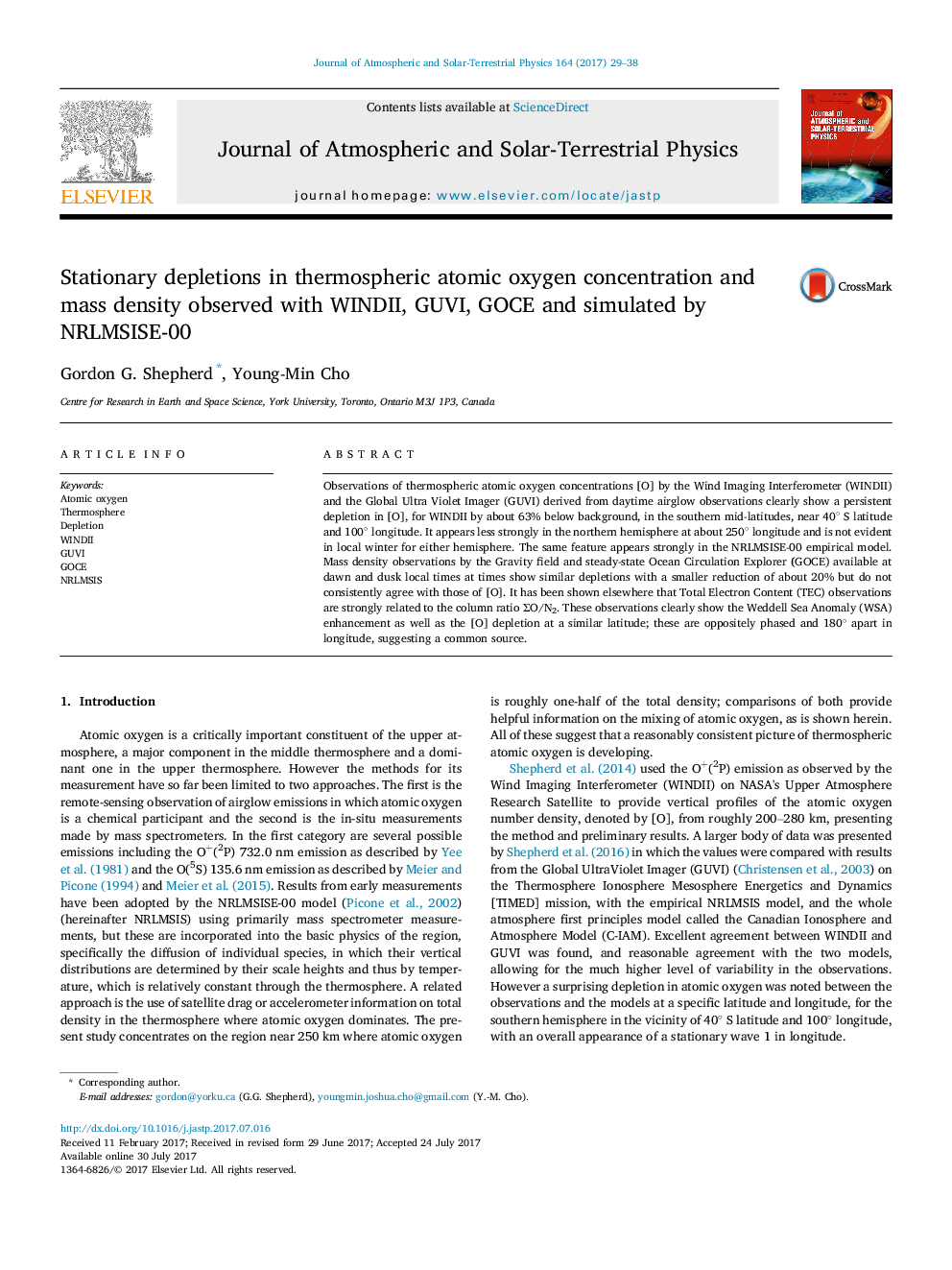| Article ID | Journal | Published Year | Pages | File Type |
|---|---|---|---|---|
| 5487456 | Journal of Atmospheric and Solar-Terrestrial Physics | 2017 | 10 Pages |
Abstract
Observations of thermospheric atomic oxygen concentrations [O] by the Wind Imaging Interferometer (WINDII) and the Global Ultra Violet Imager (GUVI) derived from daytime airglow observations clearly show a persistent depletion in [O], for WINDII by about 63% below background, in the southern mid-latitudes, near 40° S latitude and 100° longitude. It appears less strongly in the northern hemisphere at about 250° longitude and is not evident in local winter for either hemisphere. The same feature appears strongly in the NRLMSISE-00 empirical model. Mass density observations by the Gravity field and steady-state Ocean Circulation Explorer (GOCE) available at dawn and dusk local times at times show similar depletions with a smaller reduction of about 20% but do not consistently agree with those of [O]. It has been shown elsewhere that Total Electron Content (TEC) observations are strongly related to the column ratio ΣO/N2. These observations clearly show the Weddell Sea Anomaly (WSA) enhancement as well as the [O] depletion at a similar latitude; these are oppositely phased and 180° apart in longitude, suggesting a common source.
Related Topics
Physical Sciences and Engineering
Earth and Planetary Sciences
Geophysics
Authors
Gordon G. Shepherd, Young-Min Cho,
